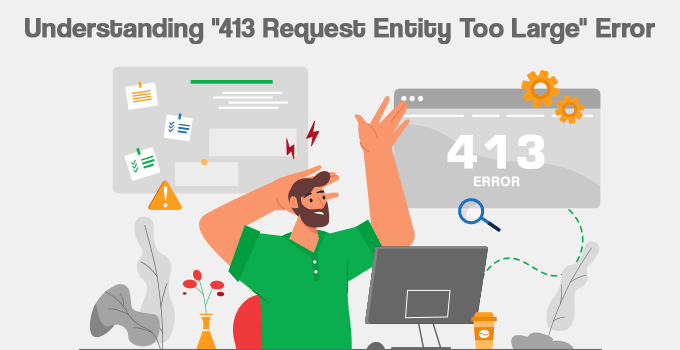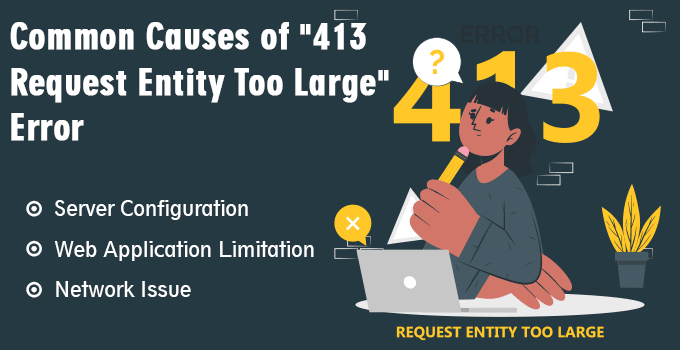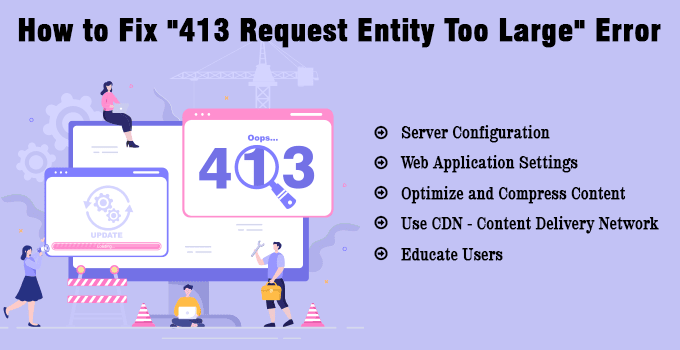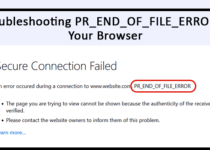The 413 Request Entity Too Large: How to Fix the Error and Keep Your Web Traffic Flowing!

413 Request Entity Too Large error occurs when the size of a client’s request exceeds the server’s file size limit. This typically happens when a client attempts to upload a large file to a web server, and the server responds with a 413 error to alert the client.
Web servers place size limits on uploads to prevent users from overwhelming the server and exceeding storage permissions. This limit usually is not an issue, and common website files should stay well under it. However, especially large file uploads may occasionally exceed the limit, resulting in the error: 413 request entity too large.
In this blog, we will understand the “413 request entity too large” error, why it occurs, and how you can resolve it. So, are you ready?
Understanding “413 Request Entity Too Large” Error

The “413 Request Entity Too Large” error is an HTTP status code that indicates the server’s refusal to process a request because the request’s payload (e.g., an uploaded file or data) exceeds the server’s specified size limit. This error typically occurs when a client, such as a web browser or application, sends a request to a server with a content body that surpasses the server’s configured limit.
In other words, the error “413 Request Entity Too Large” occurs when a request made from a client is too large to be processed by the web server. If your web server sets a specific HTTP request size limit, clients may face error 413. An example request that may cause this error would be if a client were trying to upload a large file to the server, i.e., a large media file like Images, Video, Audio, etc.
You may get the same error with different names as below:
Status Code 413
Error 413
HTTP Error Code: 413
413 Request Entity Too Large
413 Payload Too Large
Entity Too Large 413
413 Request Entity Too Big
HTTP Error 413
Common Causes of “413 Request Entity Too Large” Error

As you know what exactly the error “413 Request Entity Too Large” is, you must have already gotten an idea as to what can cause the error. Let’s check them out.
1) Server Configuration
Most of the hosting providers set a cap on how much data you can store on the web server. This is the most common cause of the issue. In order to prevent users from uploading large numbers of junk files, large media files, and to prevent any abuse and ensure server stability, the server is set up with limits of request size.
When the request size is set with limited storage, and you try to upload the large file(s), you may encounter the error.
2) Web Application Limitation
Sometimes, the request size set up on the server configuration can be higher. However, the web application or framework may have built-in size restrictions for file uploads or request payloads.
In such scenarios, even if you extend the request limit on the server end, you may encounter the error until you fix the issue with the web application.
3) Network Issue
Surprising but true. When you are using a slow or unstable internet connection, you may face issues while uploading the files. When you attempt to upload the file from the website and your internet connection is dropped, you may see a 413 Request Entity Too Large or Request Timeout error.
How to Fix the “413 Request Entity Too Large” Error

Now that we understand what causes this error. Let’s explore some solutions to fix it and ensure a smooth user experience on your website.
1) Server Configuration
Since the server configuration is one of the most common culprits, first of all, you should review and adjust your server’s configuration when you encounter the error. This typically involves modifying the server’s settings to increase the allowed request size limit. The process may vary depending on the web server you are using. Let’s check out the solution for the most common web server.
Nginx:
If you are using Nginx as your web server, you need to find the nginx.conf file. We will modify the client_max_body_size directive to increase the request size limit. You will find the nginx.conf file at /etc/nginx/nginx.conf or at /etc/nginx/sites-available/your-site-name.conf. Open this file and find the directive client_max_body_size.
Now, increase the value as per your requirement.
Code:
server {
...
client_max_body_size 64M;
...
}
Once you have added the code and saved it, restart the Nginx web service.
Apache:
If you are using Apache as your web server, you need to find the httpd.conf file. We will modify the LimitRequestBody directive to increase the request size limit. You will find the httpd.conf file at /etc/httpd/conf/httpd.conf. Or you can adjust it in your website’s .htaccess file. You will need to open this file and find the directive LimitRequestBody.
You can increase the value as per your requirement.
Code:
server {
...
LimitRequestBody 67108864
...
}
Once you have added the code and saved it, restart the Apache web service.
2) Web Application Settings
If you are using any web application or content management system like WordPress, Joomla, or Drupal for your website, you should check their setting for any imposed request size limits. Most of these systems have limits for maximum upload sizes. But, you can always change the variables from your .htaccess file to increase the limits.
In your .htaccess file, add the following code:
php_value upload_max_filesize 64M
php_value post_max_size 64M
php_value max_execution_time 300
php_value max_input_time 300
3) Optimize and Compress Content
Another approach to prevent large file uploads from causing this error is to optimize and compress your website’s content. You can use image compression tools, minify your CSS and JavaScript files, and employ efficient content delivery techniques to reduce the overall payload size.
4) Use CDN – Content Delivery Network
CDN uses pop servers to store the static content of your website. Implementing a Content Delivery Network (CDN) can help distribute the load and reduce the likelihood of encountering this error. CDNs store cached copies of your website’s content on servers located in various geographical regions, which can mitigate the impact of large requests on your origin server.
5) Educate Users
One of the effective ways to get rid of the error is to provide clear instructions to users about file size limits. On your website, where you have a file upload functionality, you can put a message for the maximum file size allowed. It will help users understand the limitations and encourage them to optimize their content accordingly. If they still have to send large attachments, they can use other means of communication such as email, Google Drive, etc.
Conclusion
You may find the “413 Request Entity Too Large” error frustrating. However, after understanding its causes and implementing the proper solution, you can get rid of the error and keep your web traffic flowing smoothly. After going through this post, you can quickly fix the error on your website. If you still face any issues, feel free to contact us.


